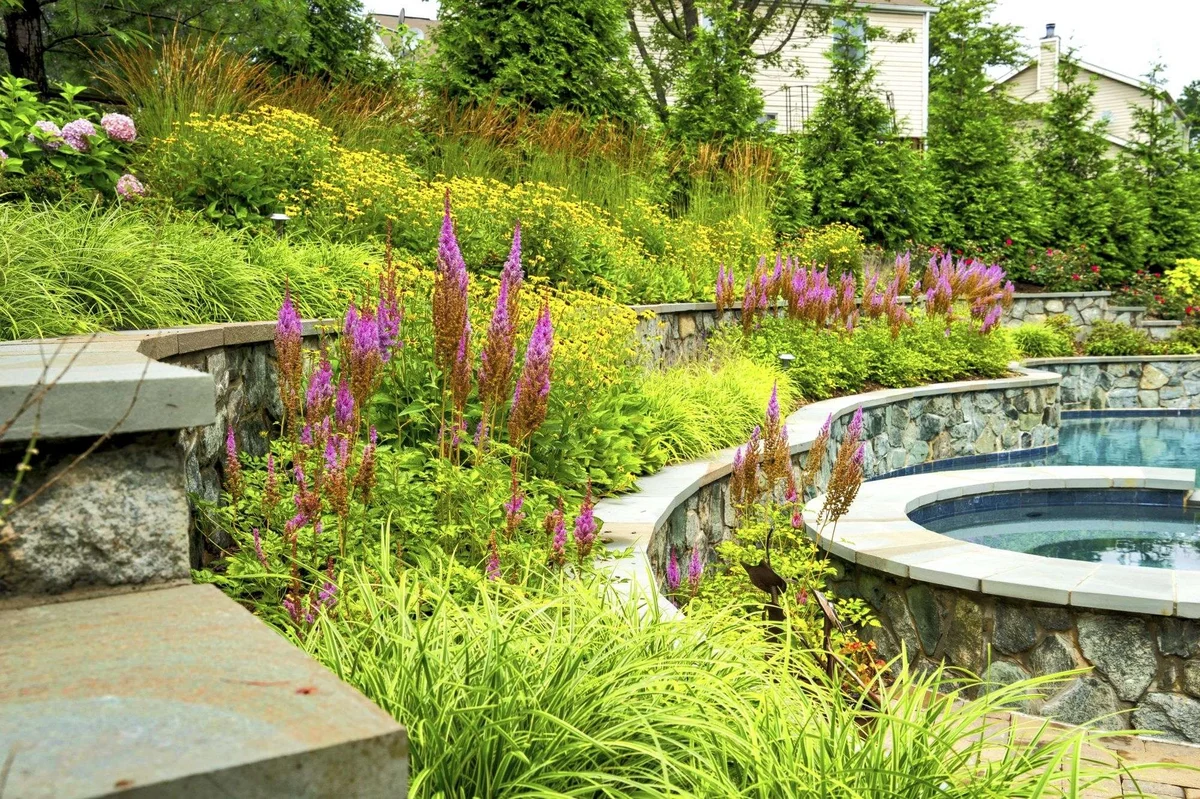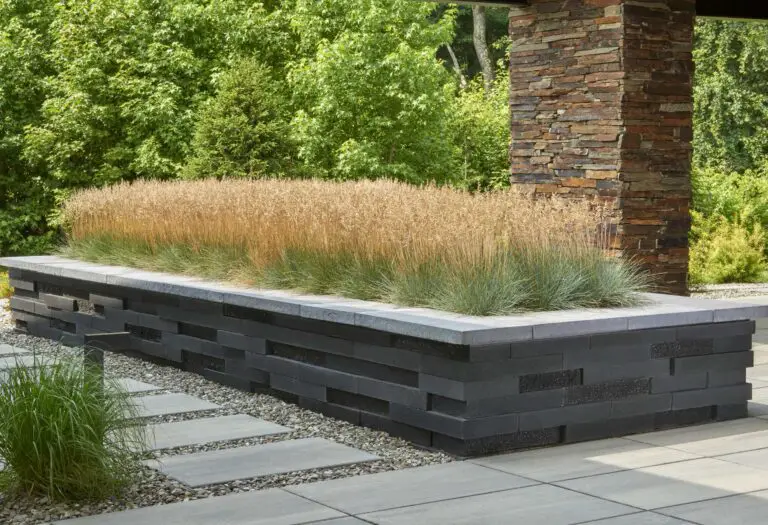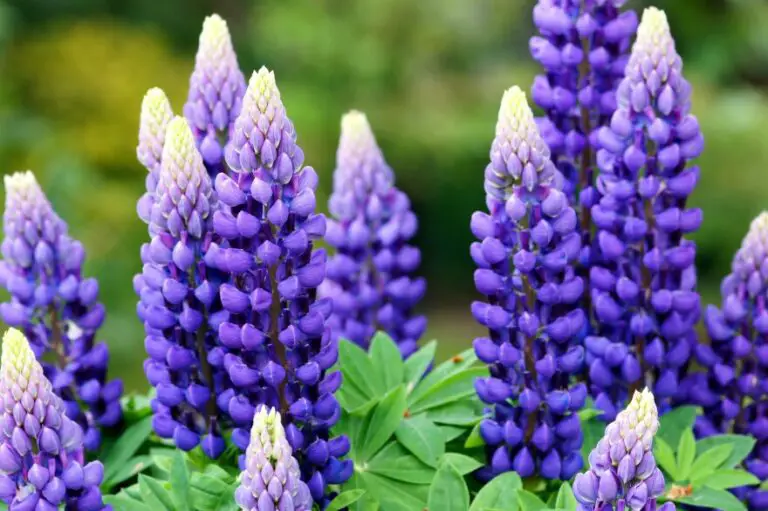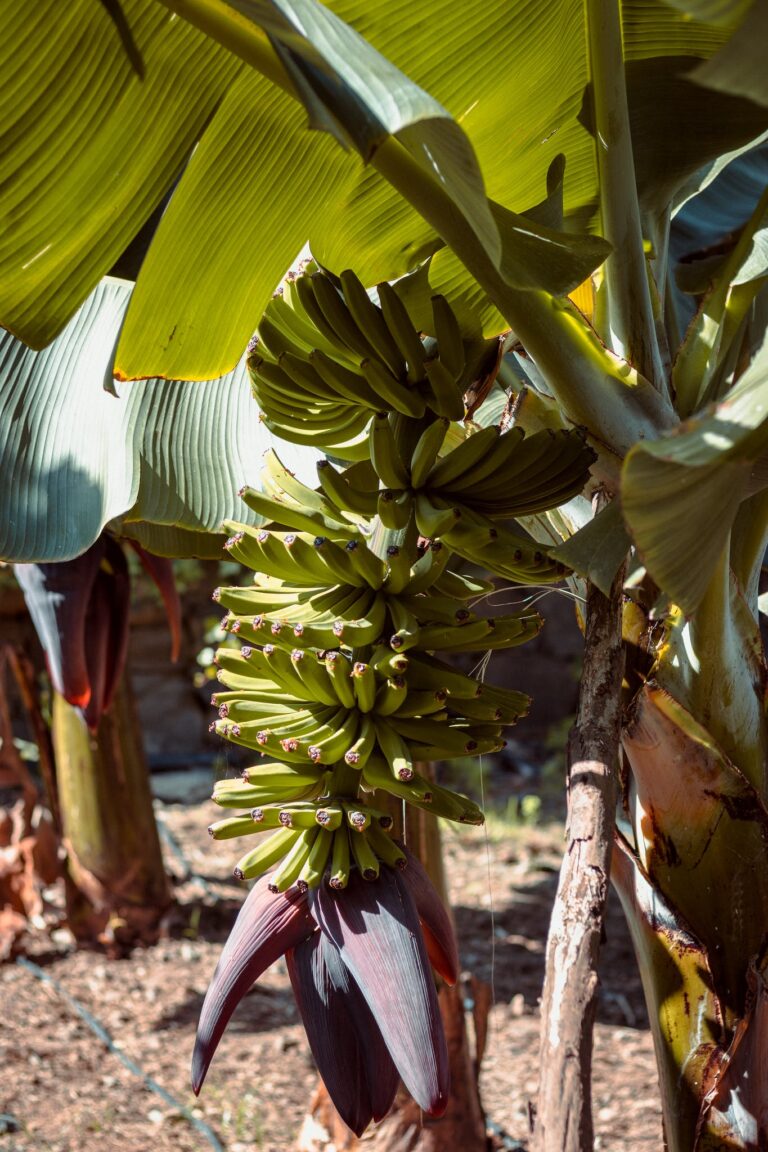29+ Ornamental Grasses and How to Grow Them
Types of Ornamental Grasses
Ornamental grasses are versatile and attractive plants that can add texture, movement, and interest to any garden or landscape. There is a wide variety of ornamental grasses available, each with its unique characteristics and growth habits. Some popular types of ornamental grasses include Fountain Grass, Miscanthus, Pampas Grass, and Blue Fescue. These grasses vary in height, color, and texture, allowing for endless possibilities in design and landscaping. Whether you want a showy focal point or a subtle border plant, there is an ornamental grass that will suit your needs.
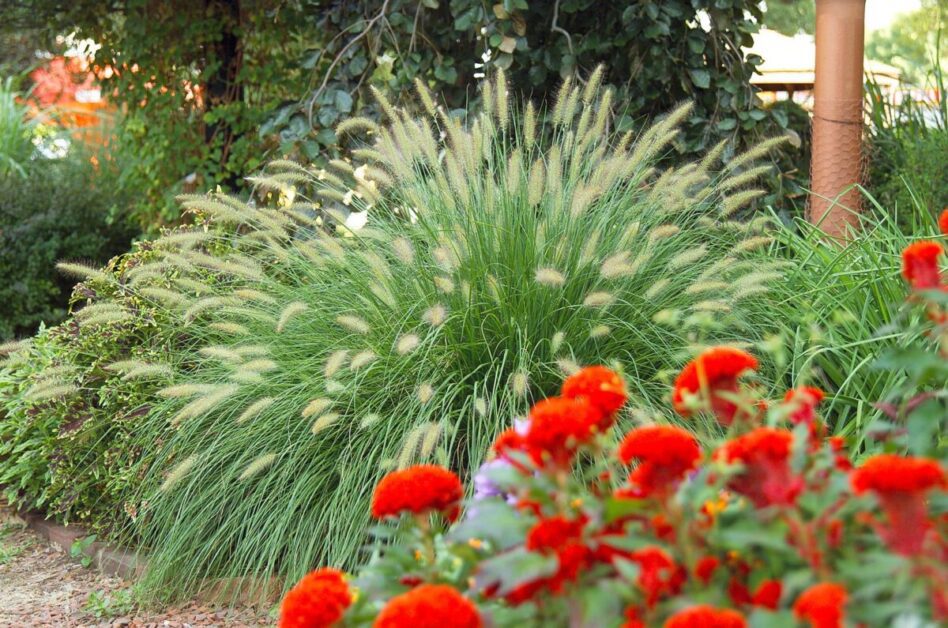
In addition to the aforementioned varieties, other options like Switchgrass, Japanese Forest Grass, and Zebra Grass offer different foliage colors and patterns to enhance your outdoor space. These grasses can be used in containers, mixed borders, or as standalone specimens to create visual interest and provide year-round appeal. Ornamental grasses are low-maintenance plants that can thrive in a variety of growing conditions, making them an excellent choice for both novice and experienced gardeners looking to enhance their outdoor spaces.
Choosing the Right Ornamental Grass for Your Garden
When choosing the right ornamental grass for your garden, it’s important to consider factors such as the desired height, color, texture, and overall aesthetic you want to achieve. Some popular options include Fountain Grass (Pennisetum alopecuroides), which adds a graceful element with its arching foliage and feathery plumes, or Japanese Blood Grass (Imperata cylindrica ‘Rubra’), known for its striking red blades that intensify in color as the season progresses.
Another essential aspect to consider is the growing conditions of your garden. Different ornamental grasses thrive in varying environments, so assessing the sunlight exposure, soil type, and moisture levels of your garden can help you narrow down the options that will flourish best in your specific landscape. By carefully selecting the right ornamental grass based on both visual appeal and environmental suitability, you can create a harmonious and vibrant garden that enhances the overall beauty of your outdoor space.
Ideal Growing Conditions for Ornamental Grasses
Ornamental grasses can thrive in a variety of growing conditions, but understanding their ideal environment can help ensure their health and beauty in your garden. These plants generally prefer well-draining soil that is rich in organic matter, providing them with essential nutrients for growth. Additionally, most ornamental grasses do well in full sun, requiring at least six hours of sunlight daily to flourish.
When it comes to water, ornamental grasses have varying needs depending on the specific species. While some varieties are drought-tolerant and require minimal watering once established, others may need more consistent moisture to thrive. It’s crucial to consider the watering requirements of the ornamental grass you choose to ensure you’re providing the appropriate level of hydration for optimal growth and development.
Sunlight Requirements for Ornamental Grasses
Ornamental grasses are versatile plants that can thrive in various light conditions, making them a popular choice for many gardeners. When it comes to sunlight requirements for ornamental grasses, it’s essential to consider the specific variety you are growing. Some ornamental grasses, such as Maiden Grass (Miscanthus sinensis), prefer full sun exposure to thrive and display their best colors and textures. On the other hand, shade-loving varieties like Japanese Forest Grass (Hakonechloa macra) can add a touch of elegance to shady spots in your garden.
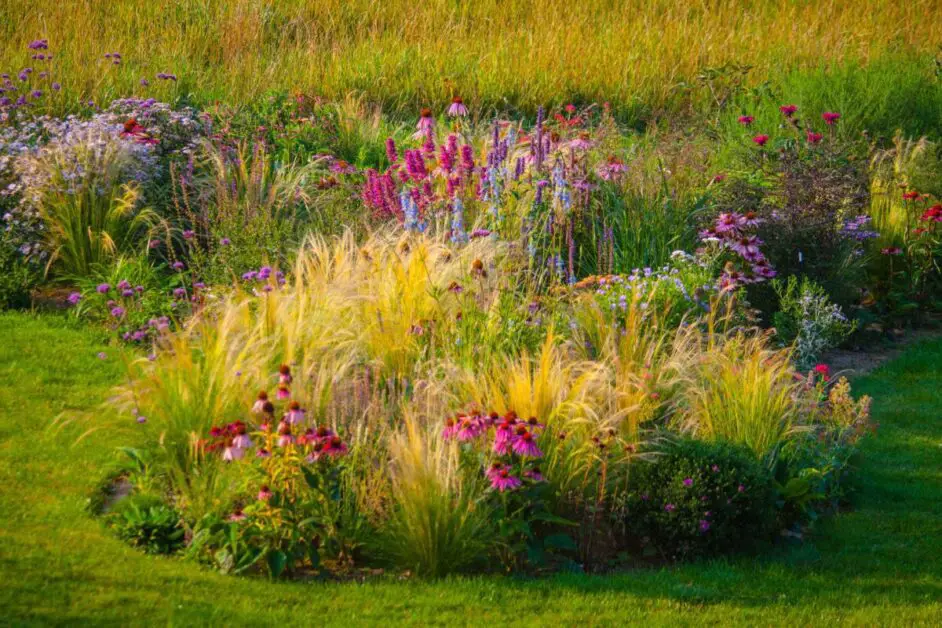
Understanding the sunlight preferences of ornamental grasses can help you plan your garden layout effectively and ensure the health and beauty of your plants. Whether you have a sun-drenched garden or shady nooks that need some greenery, there are ornamental grasses suitable for every light condition. By choosing the right grass for the sunlight available in your garden, you can create a stunning landscape that enhances the overall aesthetic appeal of your outdoor space.
Soil Preferences for Different Types of Ornamental Grasses
When it comes to growing ornamental grasses, understanding their soil preferences is crucial for ensuring their health and vitality. Different types of ornamental grasses have varying needs when it comes to soil composition, drainage, and pH levels. For example, ornamental grasses like Miscanthus and Panicum generally prefer well-draining soil with a slightly acidic to neutral pH level. On the other hand, ornamental grasses such as Carex and Hakonechloa thrive in moist, fertile soil with a more neutral to alkaline pH.
It’s important to research and determine the specific soil preferences of the ornamental grass species you plan to grow in your garden to provide them with the best growing conditions possible. By understanding their soil requirements, you can optimize the health and growth of your ornamental grasses, helping them to flourish and enhance the beauty of your garden landscape. Working with the natural preferences of ornamental grasses ensures a thriving and harmonious garden environment.
The table shows soil composition for different types of ornamental grasses:
| Ornamental Grass Type | Soil Preferences |
|---|---|
| Fountain Grass (Pennisetum spp.) | Well-drained loamy or sandy soils with good fertility. Avoid waterlogged conditions. |
| Maiden Grass (Miscanthus spp.) | Prefers fertile, well-drained loamy soils with a pH range of 5.5 to 7.0. |
| Feather Reed Grass (Calamagrostis spp.) | Thrives in moist, well-drained soils with good fertility. Can tolerate a wide range of soil types but prefers loamy soils. |
| Blue Fescue (Festuca glauca) | Prefers well-drained sandy or loamy soils with good fertility. Tolerates slightly alkaline soil conditions. |
| Japanese Silver Grass (Miscanthus sinensis) | Performs best in fertile, well-drained soils with consistent moisture. Prefers slightly acidic to neutral soil pH. |
| Switchgrass (Panicum virgatum) | Adapted to a wide range of soil types, including sandy, loamy, and clay soils. Tolerates both dry and moist conditions. |
| Zebra Grass (Miscanthus sinensis ‘Zebrinus’) | Requires well-drained, fertile soils with moderate moisture levels. Tolerant of a wide range of soil pH. |
| Purple Moor Grass (Molinia caerulea) | Prefers moist, well-drained soils with good fertility. Can tolerate slightly acidic to slightly alkaline soil pH. |
| Little Bluestem (Schizachyrium scoparium) | Thrives in well-drained sandy or loamy soils with low to moderate fertility. Tolerates drought and poor soil conditions. |
| Japanese Blood Grass (Imperata cylindrica) | Prefers well-drained loamy soils with moderate moisture levels. Tolerant of a wide range of soil pH. |
Watering Needs of Ornamental Grasses
Ornamental grasses have varying watering needs depending on their specific species and environmental conditions. In general, these grasses are quite adaptable and can tolerate dry periods once established. However, during the initial planting phase and especially in hot climates, it is crucial to provide adequate moisture to promote healthy growth.
Overwatering can be just as detrimental as underwatering for ornamental grasses, leading to root rot and other issues. The key is to find a balance by allowing the soil to dry out slightly between watering sessions. It’s recommended to water deeply but infrequently to encourage deep root development and overall plant resilience. Understanding the specific requirements of the ornamental grass species in your garden will help you tailor your watering practices for optimal growth and beauty.
Fertilizing Ornamental Grasses
When it comes to fertilizing ornamental grasses, it’s crucial to understand their specific needs to ensure they thrive in your garden. Generally, ornamental grasses are not heavy feeders, and too much fertilizer can actually lead to floppy growth. A balanced slow-release fertilizer applied in the spring as new growth appears can provide the necessary nutrients for healthy development without risk of overfeeding.
It’s important to note that different types of ornamental grasses may have varying fertilization requirements based on their growth habits and nutrient preferences. While some varieties may benefit from an occasional boost of nitrogen during the growing season, others may thrive with minimal fertilization. Understanding the specific needs of your ornamental grasses through research and observation will help you tailor your fertilization approach to promote lush, vibrant growth without causing harm to these beautiful landscaping additions.
Pruning and Maintenance Tips for Ornamental Grasses
Ornamental grasses require regular maintenance to ensure they stay healthy and vibrant in your garden. When it comes to pruning, it’s essential to trim back ornamental grasses in late winter or early spring before new growth emerges. Use sharp scissors or pruning shears to cut the grass back to a few inches above the ground level. This helps rejuvenate the plant and promotes new, healthy growth throughout the growing season.
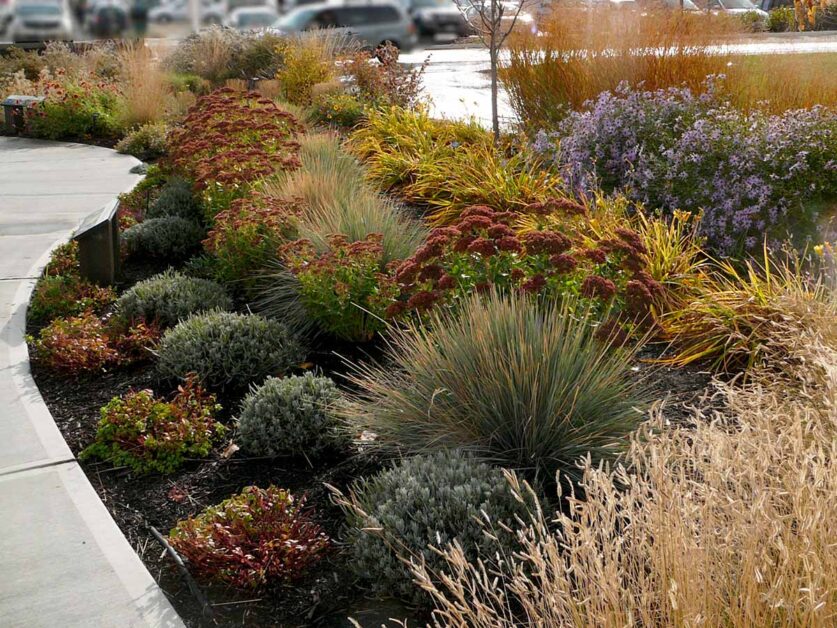
In terms of general maintenance, ornamental grasses benefit from regular watering, especially during hot, dry periods. Provide sufficient moisture to keep the soil consistently moist but not waterlogged. Fertilizing ornamental grasses in the spring with a balanced, slow-release fertilizer can also help promote strong growth and vibrant colors. Additionally, keep an eye out for any signs of pests or diseases and address them promptly to prevent any serious damage to your ornamental grasses. By incorporating these pruning and maintenance tips into your gardening routine, you can enjoy beautiful and thriving ornamental grasses year-round.
Propagation Methods for Ornamental Grasses
When it comes to propagating ornamental grasses, there are several methods you can use to multiply your plant collection in a cost-effective way. One common technique is division, where you carefully separate the root ball of an established grass into smaller sections. This method works best for clump-forming grasses like Miscanthus or Pennisetum. Simply dig up the plant in early spring or fall, cut the clump into smaller pieces using a sharp tool, and replant them in suitable locations.
Another propagation method for ornamental grasses is through seed sowing, which allows you to grow a wide variety of grass species. Collect seeds from mature grass plants in late summer or early fall, sow them in well-draining soil, and keep them moist until germination occurs. This method is ideal for grasses like Panicum or Carex that produce viable seeds. Keep in mind that some ornamental grasses may not come true from seed, resulting in variations from the parent plant.
Dealing with Common Pests and Diseases in Ornamental Grasses
Common pests and diseases can pose challenges to the health and vitality of ornamental grasses, impacting their growth and aesthetic appeal. Grasshoppers, aphids, and spider mites are common pests that can infest ornamental grasses, causing damage to their foliage and overall structure. Additionally, fungal diseases such as rust and powdery mildew can affect the leaves of these grasses, leading to discoloration and weakened resilience. It is essential for gardeners to be vigilant in monitoring their ornamental grasses for any signs of pest infestation or disease development to take prompt and effective action to mitigate these issues and ensure the continued well-being of their plants.
The table below shows some of the common pests and diseases in ornamental grasses:
| Pests and Diseases in Ornamental Grasses | Description |
|---|---|
| Aphids | Aphids can infest ornamental grasses, sucking sap from leaves and causing yellowing or distortion. |
| Grasshoppers | Grasshoppers may feed on ornamental grass foliage, leading to significant damage, especially in large populations. |
| Spider Mites | Spider mites can cause stippling and webbing on leaves, reducing the aesthetic appeal of ornamental grasses. |
| Caterpillars | Certain caterpillar species can feed on ornamental grass foliage, causing defoliation and weakening the plants. |
| Rust | Rust fungal infections can manifest as orange or reddish-brown spots on ornamental grass leaves, leading to reduced vigor and aesthetic appeal. |
| Leaf Spot | Leaf spot diseases can cause dark lesions on foliage, eventually leading to leaf death and potential decline of the plant. |
| Powdery Mildew | Powdery mildew can result in a white powdery coating on leaves, affecting the overall appearance and health of ornamental grasses. |
| Fusarium Blight | Fusarium blight can cause wilting, browning, and dieback of ornamental grass foliage, particularly during warm and humid conditions. |
Creative Ways to Use Ornamental Grasses in Landscaping
Ornamental grasses can be utilized in various creative ways to enhance the aesthetic appeal of your landscaping. One popular way is to plant ornamental grasses in clusters of varying heights to create visual interest and texture. This technique adds depth and movement to your garden, especially when the grasses sway in the breeze. Additionally, ornamental grasses can be used as borders or edging along walkways, flower beds, or water features, providing a natural and graceful transition between different elements in your landscape design.
Another creative way to incorporate ornamental grasses into your landscaping is by using them as focal points or centerpieces. Select a striking variety with unique colors, textures, or shapes to serve as a statement piece in your garden. Placing a standalone ornamental grass specimen in a strategic location can draw the eye and act as a captivating focal point amidst your other plants and flowers. Experiment with different combinations and placements to discover the most visually appealing arrangements that suit your personal taste and style.
Combining Ornamental Grasses with Other Plants
When it comes to creating a visually appealing and harmonious garden, combining ornamental grasses with other plants can add texture, movement, and interest to your landscape design. Ornamental grasses, with their graceful form and variety of colors and heights, can complement a wide range of flowering plants, shrubs, and trees, adding depth and dimension to your garden beds and borders.
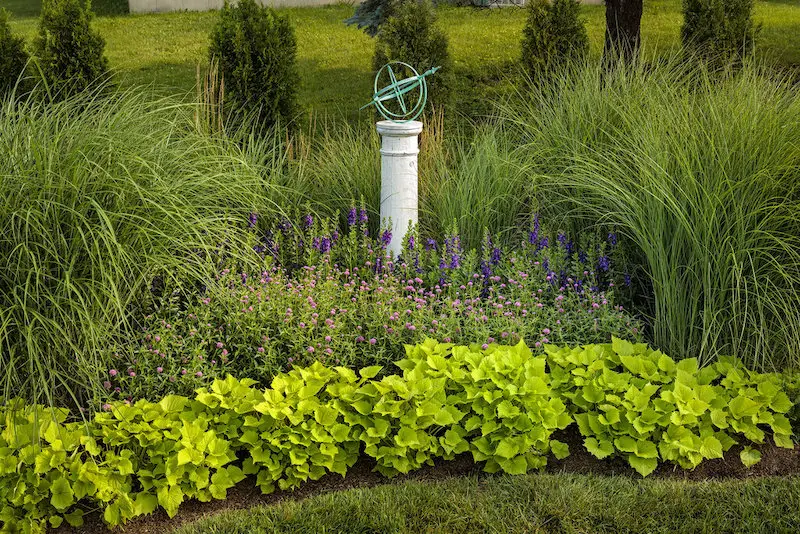
For a cohesive and balanced garden design, consider pairing fine-textured grasses like Feather Reed Grass (Calamagrostis acutiflora) with bold and architectural plants such as Agapanthus or Yucca. The soft, billowy foliage of Fountain Grass (Pennisetum alopecuroides) can be a stunning contrast to the structured leaves of Hostas or the upright spikes of Liatris. Experiment with different combinations to find the perfect balance of form, color, and height for a striking landscape that evolves throughout the seasons.
Overwintering Ornamental Grasses
When it comes to overwintering ornamental grasses, proper preparation is essential to ensure their health and vitality during the colder months. As the temperatures drop, these grasses may appear dormant, but they are still actively storing energy in their roots to support new growth when spring arrives. One important step to take is to cut back the foliage of the grasses in late fall or early winter to a few inches above ground level. This helps prevent the grass from becoming damaged by heavy snow or ice buildup and promotes airflow, reducing the risk of disease.
In addition to trimming back the foliage, it is also beneficial to apply a layer of mulch around the base of the grass to provide insulation against extreme temperatures. Mulch acts as a protective barrier, helping to regulate soil temperature and retain moisture, which is especially important during the winter months when the ground can freeze and thaw repeatedly. By taking these steps to protect your ornamental grasses during the winter, you can help ensure they emerge healthy and vibrant when the growing season returns.
Dividing Overgrown Ornamental Grasses
To maintain the health and vigor of your ornamental grasses, it is essential to divide them when they become overgrown. Dividing overgrown ornamental grasses not only helps in rejuvenating the plants but also promotes better growth and flowering. When tackling this task, it is crucial to choose the right time of year, typically in early spring before new growth begins or in early fall when the weather is cooler.
Start by digging up the clump of ornamental grass, taking care to preserve as much of the root system as possible. Use a sharp spade or garden knife to separate the clump into smaller sections, ensuring that each division has a good amount of roots and healthy foliage. Replant the divided sections in well-prepared soil, water them thoroughly, and mulch around the plants to retain moisture. With proper care and attention, your divided ornamental grasses will thrive and add beauty to your garden once again.
Popular Varieties of Ornamental Grasses
Ornamental grasses are a versatile and aesthetically pleasing addition to any garden or landscape. With a wide variety of species to choose from, each offering unique textures, colors, and growth habits, there’s a perfect ornamental grass for every gardening style. Some popular varieties include Fountain Grass (Pennisetum setaceum), known for its graceful arching stems and feathery plumes, and Maiden Grass (Miscanthus sinensis), prized for its upright stature and elegant plumes that turn a golden hue in the fall.
For gardeners looking to add a touch of drama and height to their landscapes, Pampas Grass (Cortaderia selloana) is a striking choice with its towering plumes of white or pink flowers. For a more compact option, Blue Fescue (Festuca glauca) offers a mound of fine, silvery-blue foliage that adds a cool-toned accent to rock gardens or borders. These popular ornamental grasses are just a few examples of the diverse range of options available to enhance and beautify outdoor spaces.
By watching this video you can learn more about ornamental grasses.
Resources for Further Information on Ornamental Grasses
For those seeking more in-depth information on ornamental grasses, there are numerous resources available to expand your knowledge and expertise in cultivating these versatile plants. Websites such as the American Horticultural Society and the Royal Horticultural Society offer comprehensive guides on different varieties of ornamental grasses, their growing requirements, and creative landscaping ideas. Garden centers and botanical gardens often host workshops and seminars dedicated to ornamental grass cultivation, providing hands-on experience and expert advice from seasoned horticulturists.
Books like “The Encyclopedia of Ornamental Grasses” by Rick Darke and “Grasses: Versatile Partners for Uncommon Garden Design” by Nancy J. Ondra are excellent resources for a more in-depth understanding of ornamental grass species, their characteristics, and how to effectively incorporate them into your garden design. Additionally, gardening magazines and online forums can be valuable platforms for exchanging tips, tricks, and experiences with other enthusiasts and professionals in the field. By tapping into these diverse sources of information, gardeners can continue to enhance their skills and appreciation for the beauty and benefits of ornamental grasses.
Can ornamental grasses be used in indoor arrangements?
Yes, some varieties of ornamental grasses can be successfully grown indoors in containers.
How can I incorporate ornamental grasses into a water feature in my garden?
Ornamental grasses can be planted around the edges of a water feature to create a natural and soft look.
Are there any ornamental grasses that are particularly drought-tolerant?
Yes, some ornamental grasses, such as Mexican feather grass and blue fescue, are known for their drought tolerance.
Can ornamental grasses attract wildlife to my garden?
Yes, ornamental grasses can attract birds and beneficial insects to your garden.
How can I protect my ornamental grasses from being damaged by strong winds?
Placing a windbreak, such as a fence or hedge, can help protect ornamental grasses from being damaged by strong winds.

